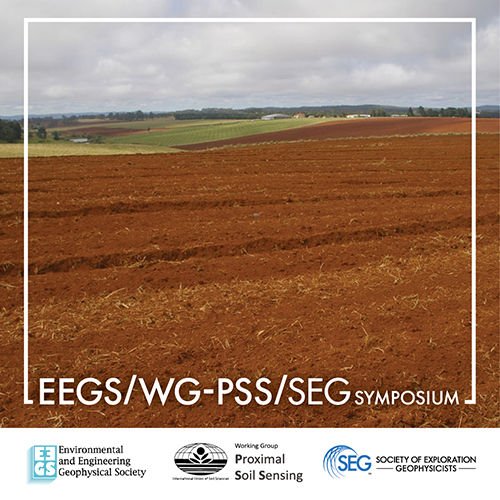FastTIMES special issue on NDE and US Infrastructure
By Angelo Lampousis
The renowned Italian writer Umberto Eco (1932-2016) famously declared once “There is no news in August.” He was probably right, but his aphorism certainly does not apply this year for agricultural geophysics. The International Union of Soil Sciences, the Society of Exploration Geophysicists (SEG), and the Environmental and Engineering Geophysical Society, working in concert, announced a major symposium scheduled for August 17-19, 2021. It is entitled “Application of Proximal and Remote Sensing Technologies for Soil Investigation.”

Dr. Barry Allred, Research Agricultural Engineer, USDA/ARS – Soil Drainage Research Unit, Columbus, Ohio, told the FastTIMES “There have been substantial recent advances in soil science regarding the use of proximal and remote sensing technologies. Examples of these technologies applied in combination include new sensor/platform integrations and fusion of proximal and remote sensing datasets to improve soil characterization and mapping. This symposium will provide a unique opportunity that brings together scientists and engineers across a range of disciplines to explore the combined potential of proximal and remote sensing technologies as related to soil science applications.”
The first two days of the symposium will have technical sessions and panel discussions on a variety of topics, while the final day of the symposium will be devoted to a short course on proximal/remote sensing data management and mapping. The short course is entitled “Bring Your Sensor Data Management and Processing into the 21st Century!” The short course coordinator, Dr. Craig Lobsey, Lecturer in Mechatronic Engineering of the University of Southern Queensland, told the FastTIMES “Many of us are familiar with the challenges of data management and processing; especially dealing with large, disparate, and frequently evolving datasets. Our interactive short course will feature several topics covering modern tools and techniques to improve the storage, management, and processing of proximal soil sensing data obtained for soil investigation. The overall goal of this workshop will be to raise awareness of emerging computing techniques and systems. It will benefit those new to proximal soil sensing and more experienced practitioners alike.”
Laurie Whitesell, Lead Analyst in Near Surface Geophysics, Global Business Development, SEG, told the FastTIMES “Given the global distribution of members from all three societies, and the strategic use of social media as a compliment to traditional communication tools, it is anticipated that the symposium will have broad awareness across the near-surface, soil science, and computational communities. Further, utilization of SEG regional offices in Beijing and Kuala Lumpur, as well as communication to the WG-PSS global membership will result in a diverse program.”
Based on the above, it is safe to assume that this symposium will not only be of interest to agriculturalists, but also those in engineering, environmental, and archeological disciplines tasked with soil investigations.
For more information on the symposium, to submit an abstract, or simply participate please access the event webpage:
For any questions regarding registration or sponsorship opportunities please contact the organizers:
Barry Allred: barry.allred@usda.gov
Craig Lobsey: Craig.Lobsey@usq.edu.au
Laurie Whitesell: lwhitesell@seg.org



